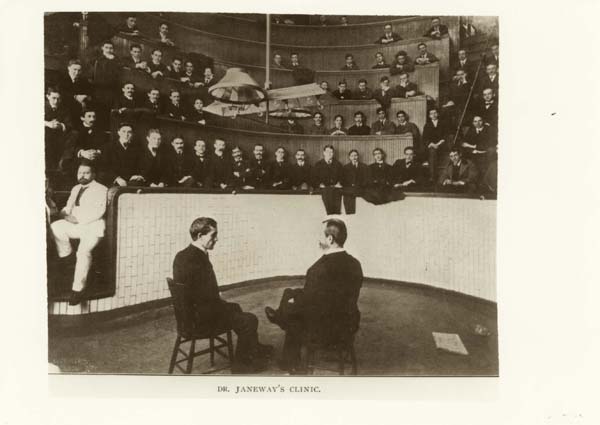 Commentary by Beth Haskins, MD, PGY-3
Commentary by Beth Haskins, MD, PGY-3
Please also see the clinical vignette presented before grand rounds on the 25th of February.
In eukaryotes, iron is a required element but can be toxic at high levels, and thus is tightly regulated. Iron is regulated mainly through acquisitions since there is no excretory route for iron. Entry of iron into plasma occurs through dietary consumption of iron and, to a larger extent, through the recycling of iron from erythrocytes.
The dietary intake of iron of the average adult is 8-10 grams/day, but only 1-2 mg/day is absorbed, which is equivalent to the rate of iron loss through skin/intestinal sloughing. Once absorbed, iron binds to transferrin and becomes incorporated into erythrocytes. Senescent erythrocytes are phagocytosed by macrophages which provides 20-30 mg of iron/day.
Iron entry into plasma is regulated through hepcidin. Hepcidin is a small 25 amino acid protein, which is a member of the defensins family of antimicrobial peptides. It is secreted primarily by hepatocytes. Hepcidin synthesis is increased in periods of inflammation, and decreased in hypoxia and anemia. In mice and humans, deletion of the hepcidin gene, HAMP, results in iron overload, and over-expression of HAMP causes anemia, indicating the hepcidin is a negative regulator of iron acquisition.
Hepcidin regulates iron transport by binding to ferroportin, an iron exporter found on the basolateral surface of the duodenum as well as on macrophages and placental cells. Hepcidin causes internalization of ferroportin, removing ferroportin from cell surfaces, thus preventing iron exportation and increasing intracellular stores of iron. In response to inflammation, macrophages release cytokines, including IL-6. IL-6 stimulates receptors present on hepatocytes causing increased hepcidin production. Thus, in an inflammatory state, hepcidin is produced and plasma iron decreases resulting in hypoferremia.
If inflammation is persistent, prolonged hypoferremia will result in anemia.
Hereditary hemochromatosis is a disease that describes several genetic mutations that result in iron overload. The recessively inherited iron overload disorders result from decreased expression of hepcidin. Decreased hepcidin leads to increased levels of ferroportin and increased iron entry into plasma. The dominantly inherited iron overload diseases result from mutations in ferroportin. Mutations that decrease cell surface ferroportin lead to macrophage iron loading and decreased transferrin saturation. Alternatively, mutations that result in ferroportin not being internalized by hepcidin result in hepatocyte iron overload and high transferrin saturation. In this latter disorder, iron overload may occur when hepcidin is unable to stimulate ferroportin internalization, by mutations in the hepcidin binding site on ferroportin, as well as a mutation in the ability of ferroportin to bind JAK2. JAK2 is an intracellular protein kinase that, when activated by hepcidin binding binds to and phosphorylates ferroportin resulting in ferroportin.
In summary, hepcidin is a negative regulator or iron metabolism through its downregulation of ferroportin. Hepcidin overproduction in inflammatory states results in anemia, and it’s lack of activity in hereditary hemochromatosis results in iron overload.
